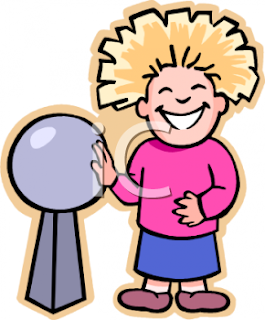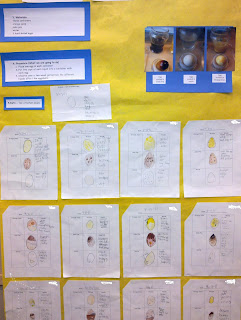 Roll a can with static electricity
Roll a can with static electricityItems you need: empty soda can, blown up balloon, head of hair
1. Place the can on its side on a flat smooth surface like a table or a smooth floor. 2. Rub the blown up balloon back and forth through your hair really fast.3. Now the fun part - Hold the balloon close to the can without actually touching the can. The can will start to roll towards the balloon without you even touching it!
Follow Up Experiments:
1. Does the size of the balloon change the power of the pull?
2. How much water can you put in the can until the balloon can't pull it anymore?
Source: Science Bob, http://www.sciencebob.com/
 Make a bone bend
Make a bone bendItems you need : large jar to fit a chicken bone, chicken bone (drumstick), vinegar
2. Rinse off the bone in running water to remove any meat from the bone.
3. Notice how hard the bone is - gently try bending it. Like our bones, chicken bones have a mineral called calcium in them to make them hard.4.Put the bone into the jar and cover the bone with vinegar. It might be a good idea to put the lid on the jar or cover it - let it sit for 3 days5. After 3 days remove the bone. It should feel different. Now can rinse it off and try bending it again. Is it really a rubber bone?
Follow Up Experiments:
1. Does the length of time the bone is in vinegar affect how much the bone bends?
2. Do smaller size bones become "bendy" sooner?



















































